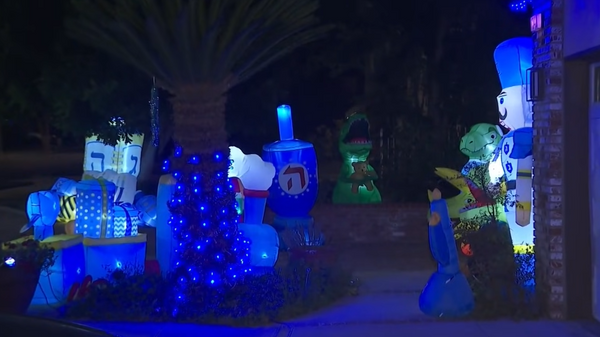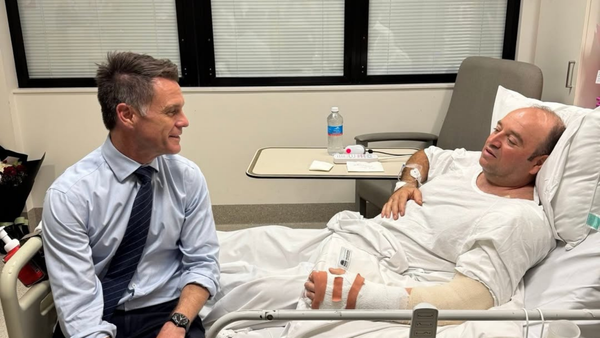
In 1991, when Frieze Magazine was launched in London by old Oxford University friends Amanda Sharp and Matthew Slotover, the whole of the British art world could fit into a pub. There were only around 35 commercial galleries in the UK capital and even fewer in Los Angeles, where Frieze’s new owner, the Hollywood kingpin Ari Emanuel is based.
Frieze’s sale, which was announced on 1 May and is due to be completed by the end of this year, will see the Hollywood entertainment company Endeavor transfer the art fair and media brand to Emanuel for a reported price of nearly $200m—a figure that has surprised many in the industry. Last autumn, Endeavor was rumoured to be asking for what was then considered an already ambitious $80m for its seven global art fairs, Cork Street gallery and flagship magazine.
The terms of the acquisition have not been disclosed, but it would seem money is not an issue for Frieze’s new owner. Emanuel was added to the Bloomberg Billionaire index for the first time in his career in February and the new global events company he set up to acquire the art fair franchise is backed by a consortium of global investors including asset managers Apollo Global Management and RedBird Capital Partners. For now, Frieze is staying tight-lipped on details of Emanuel’s as yet unnamed new venture and where it will be based.
As Endeavor’s former chief executive, Emanuel has worked with the Frieze team for nearly a decade, so he is not new to the art fair scene. He also a passionate, if relatively recent, art collector, collaborating with the art dealer Jeffrey Deitch over the past 15 years to amass a collection of works by some of the greatest contemporary black painters including Sam Gilliam, Kara Walker, Barkley L. Hendricks, Mark Bradford and Noah Davis, whose retrospective just closed at the Barbican in London.

Emanuel first approached Sharp and Slotover in 2016, under the banner of the then newly formed talent agency WME-IMG, whose top Hollywood stars and athletes included Matt Damon and Serena Williams (WME-IMG later became Endeavor, which in 2023 purchased the remaining 30% ownership of Frieze for $16.5m). Sharp said at the time that the deal “came out of leftfield” but it was hoped that it would generate new sponsorship partnerships and take some of the financial pressure off dealers who then—as now—complained of the cost of doing art fairs.
There was also an expectation that WME-IMG would expand Frieze’s digital scope as well as scale up its cultural reach to the entertainment industry. In 2019, that crossover came to life in the form of Frieze Los Angeles, which launched to great fanfare at Paramount Studios. Some of Hollywood’s biggest stars including Brad Pitt, Jodie Foster, Sylvester Stallone, Leonardo DiCaprio and James Corden turned out in support.
A move to Santa Monica airport in 2023 after two years off due to the pandemic and a backlog of movie production at Paramount Studios somewhat dampened the glamour of Frieze Los Angeles’ early days; all eyes are on whether Emanuel will again look for a venue with more star power.
What is certain is that Emanuel’s vision for Frieze is bigger than that of Endeavor, which is selling off “non-core” assets including Frieze and the Miami and Madrid Open tennis tournaments as part of a bigger, go-private deal in which Endeavor was acquired by its largest shareholder, the private equity firm Silver Lake, for an estimated $25 billion in March.

Reflecting its refocus on the representation business, Endeavor has changed its name to WME Group. Emanuel has been named Executive Chairman of the new group and remains chief executive and executive chair of TKO, the sports and entertainment company that counts Ultimate Fighting Championship and World Wrestling Entertainment among its biggest earners.
Through Emanuel’s new events and experiences firm, however, his focus will remain on Frieze. So what might this mean for the long talked about Hollywoodisation of the British brand? And how might Frieze balance its art-centric roots with the demands of the entertainment industry? Leadership at the art fair remains intact, while Frieze’s chief executive Simon Fox stresses that “supporting the arts community remains at the heart of what we do”.
In a statement, Emanuel says Frieze will become a “foundational part” of his new venture. “Frieze has always been a source of inspiration for me—both professionally and personally,” he adds. “I’ve seen first-hand the strength of their community and the ambition driving their mission to expand the reach and understanding of contemporary art. Frieze is well positioned for further growth and represents a strategic cornerstone in our new global events platform.”
What exactly this “growth” might entail and how Frieze gets there is the burning question. So far, attempts to scale up the art fair in the vein of sporting tournaments or music gigs have not materialised. Profit margins are also slim. According to the latest accounts filed at Companies House (which do not include the fairs in New York and Los Angeles), the profits for Frieze Events dropped from £3.7m in 2022 to £1.7m in 2023, chiefly due to increased administrative costs. With under 100 galleries each, the fairs in New York and Los Angeles are also known to generate little profit.

“Financially, we are insignificant to Endeavor overall,” Fox said of the art fair franchise in a 2024 Vanity Fair interview. “We are taken very seriously by Ari and the team, disproportionately to our financial contribution.”
Indeed, Frieze has been described by insiders as a “gem” in the portfolio due to its associations with the art world. “Ari’s acquisition isn’t about short-term profit, it’s about buying strategic leverage in a space that’s ripe for reinvention,” says Magnus Resch, a New York-based art economist and author of the recently published book, How To collect Art. “Frieze gives access to one of the last truly elite cultural circles: the global art world. The fair is a cultural lever, not a cash machine. In a market under pressure, that kind of influence can be worth more than margin—especially when paired with media and entertainment assets.”
Two years ago, Frieze acquired two more art fairs: The Armory Show in New York and EXPO CHICAGO. In an already saturated market, Tim Schneider, the New York-based art market commentator and founder of The Gray Market newsletter, thinks more acquisitions of this kind will not be on the cards. “It’s more likely that Ari will seek out synergies between properties that will unlock value that wasn’t there before,” Schneider says.
Frieze is not alone in its struggle to meaningfully scale up. The art market as a whole has failed to expand or scale its sales over the past decade or more, as works of art are unique and—at the luxury end—tend to be extremely expensive anyway. Schneider suggests that Emanuel is not looking at sales as a metric for growth: “The art market may not have grown, but are there other ways that art and business have intertwined in the form of merch deals and corporate sponsorship? The answer there is absolutely yes.”
Perhaps, then, Emanuel has something more radical in mind. Resch certainly thinks there’s scope. As he puts it: “The art fair model is still playing it safe, catering to an insider audience with little innovation in format or experience or revenue potential. If Frieze wants to grow, it's about being bold enough to actually disrupt. The new ownership certainly has the tools.”







